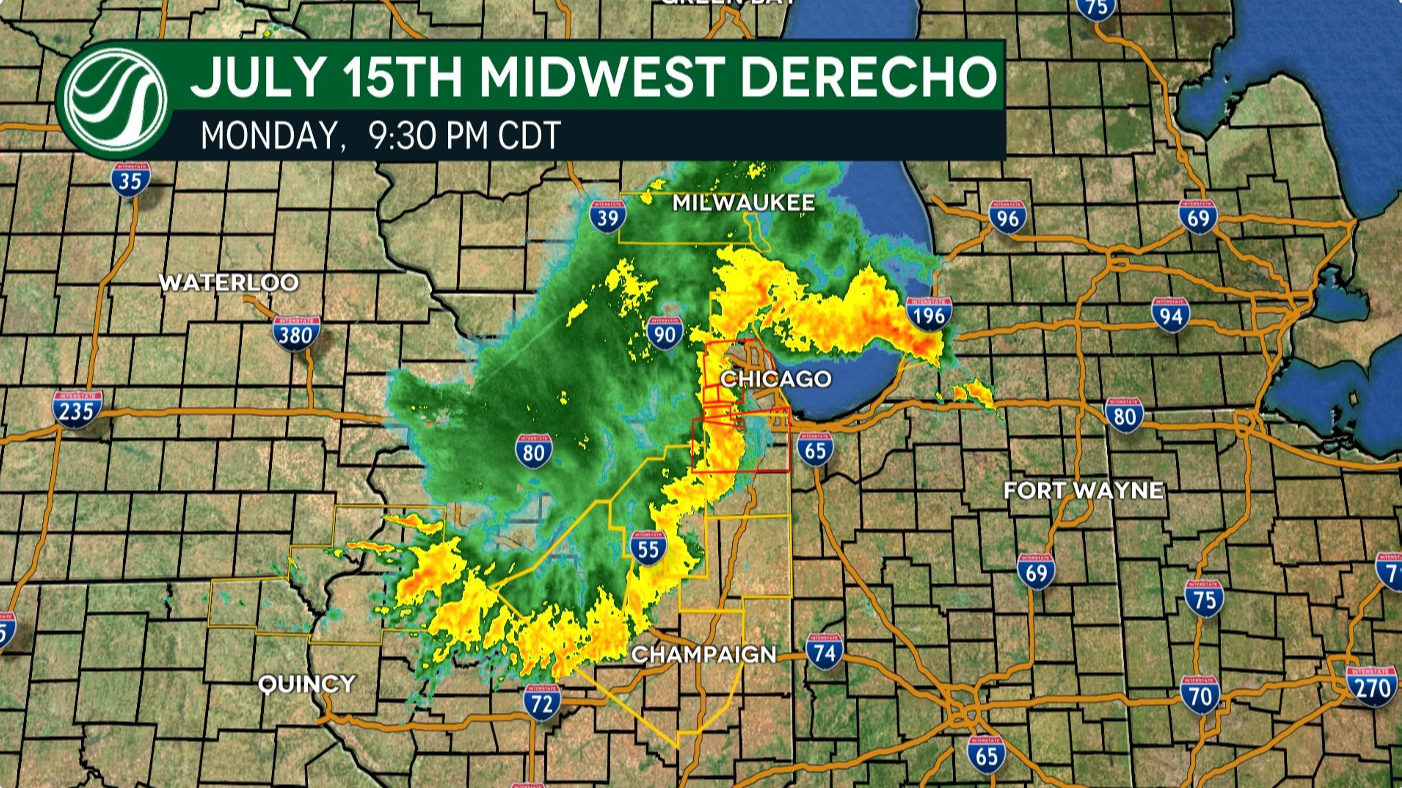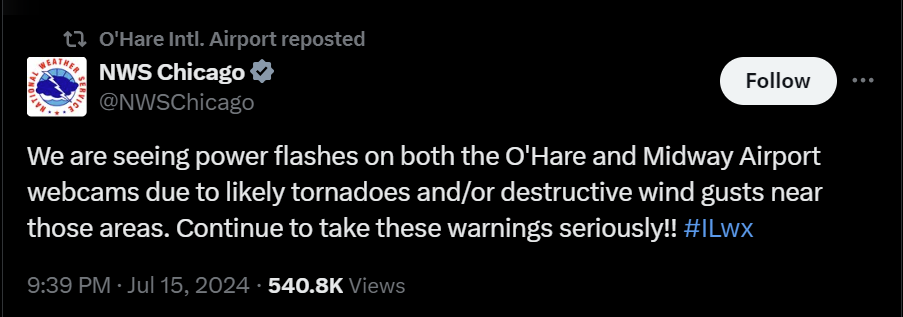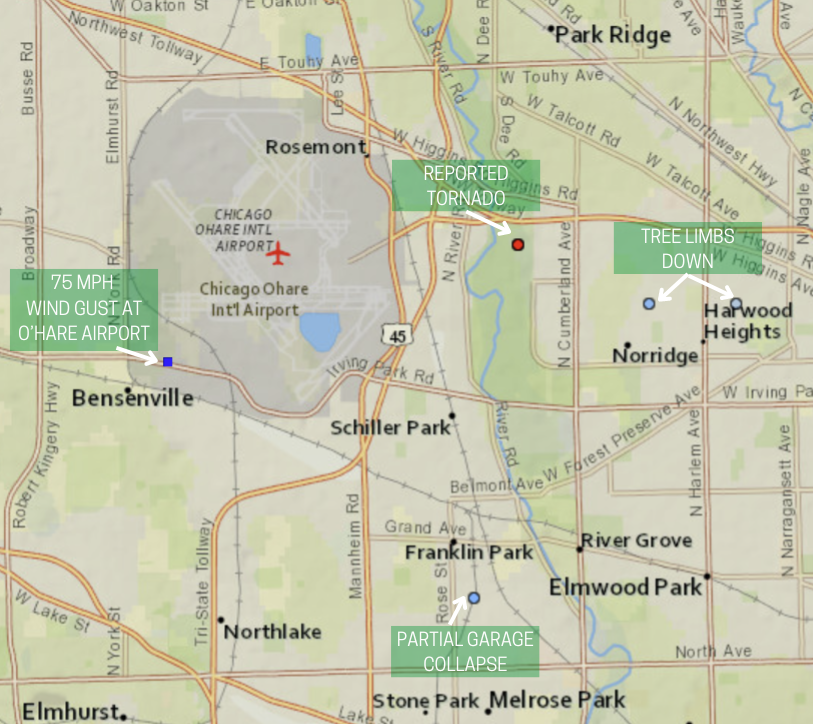A Near Miss at O’Hare: How Tornadoes Can Cause Havoc at an Airport
After severe thunderstorms hit Chicago's O'Hare Airport on Monday, flights were heavily delayed or canceled. While airports may not appreciate the intense storms, aviation does aid weather forecasts with data collected from airports and planes.

On Monday evening a widespread band of thunderstorms swept through the Upper Midwest, bringing extreme wind and tornadoes. One of the most intense areas of the storms went right through the heart of Chicago, producing high wind, heavy rain, and possibly a spin-up tornado at the Chicago O'Hare International Airport.

A tornado has not been confirmed at the airport as of Tuesday evening, however, a 75 MPH wind gust was measured at the airport and a tornado was reported less than 2 miles away. Even more damage was reported in the area such as broken tree limbs and a garage partially collapsed.

Many passengers reported sitting in a plane on the tarmac during the storm, while others sheltered in place inside. Most flights at O'Hare and Midway were delayed or canceled.
The Misery Map showing major cancellations after extreme wind and a possible tornado collided with the ORD and MDW
This is not the first time a tornado has impacted an airport. In 2011, a tornado damaged the St. Louis Lambert International Airport, forcing it to close for nearly 24 hours.
One of the most famous instances was in 1948 when a storm in Oklahoma produced a tornado impacting two different airports, one of them, the Tinker Air Force Base. According to the NWS, this storm destroyed 54 aircraft and damaged 50 other planes and about 100 vehicles. Some of the aircraft destroyed included 17 C-54 transports, valued at $500,000 apiece.
This event initiated more efforts towards accurate forecasting in Oklahoma, which eventually led to the National Weather Center to be located just south of Oklahoma City.

Airports and planes are helpful to forecasters because most airports have a weather station that measures important observations like temperature, wind speed & direction, and dew point. Additionally, more than 1,500 aircraft report weather data during their flights.
This data is critical to creating accurate forecasts. You can watch our live forecast on Facebook, Youtube, or X.
Now read about the large hail that broke off part of the nose of the Austrian Airlines aircraft in Vienna or Why NOAA Hail Reports Aren't Enough to Find Hit Areas.

